- U.S. spec is 3-row, 10 in. longer than Euro version out two years ago
- Larger 91-kwh battery pack, higher-power rear motor
- EPA range up to 234 miles, 10-80% in 26 min.
- Starts at $61,545, spans to $71,545 for top 1st Edition AWD
VW’s electric Bus reboot is finally arriving in the U.S.. And by design, it’s hard to imagine a better way that VW might have positioned an electric van for the past and the future, all at once.
Everybody wants one. Sure, it’s late and it’s been wracked by decades of false starts and concept vehicles, and by now the original Hippies may have ended their traveling days. But across generations, everyone has stories and feels tinges of nostalgia upon seeing the nose of this van and the signature two-tone themes.
This past week I drove the ID.Buzz not in San Francisco but on the rural back roads and through the suburban communities of north Georgia. Based on the diversity of questions, gawkers, and thumbs-ups—love from a tattered Tacoma, an Explorer, and a Cybertruck—it took all of 10 minutes to see that mass-market demand for this thing beyond “blue” America and counterculture hotpots is on the verge of boiling.

2025 Volkswagen ID.Buzz
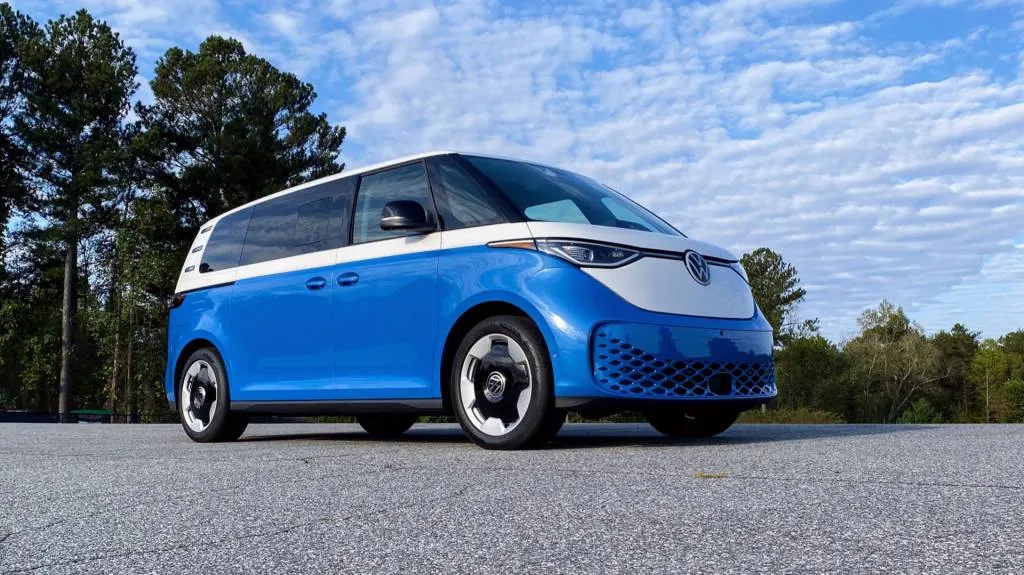
2025 Volkswagen ID.Buzz
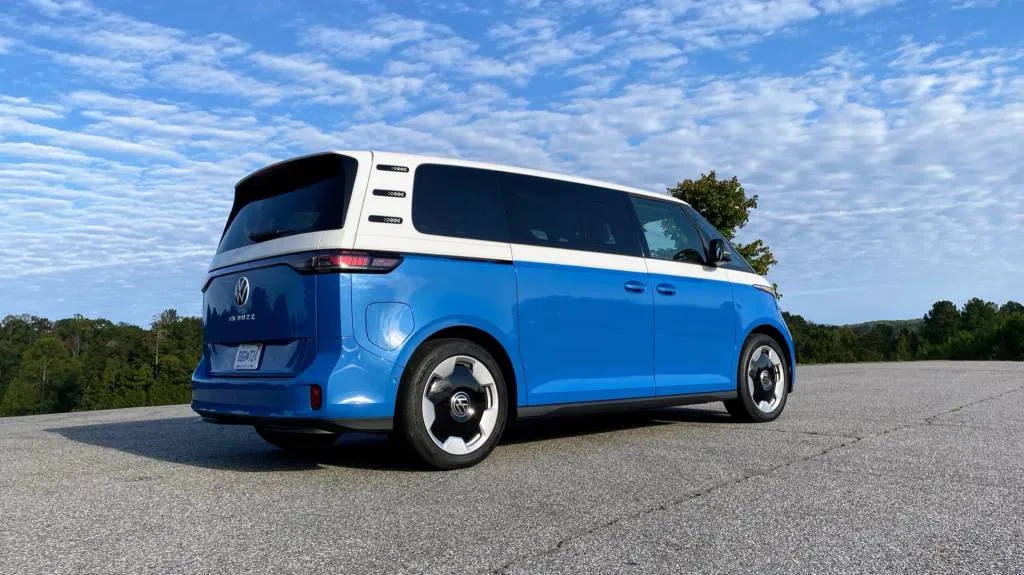
2025 Volkswagen ID.Buzz
The ID.Buzz gets smiles everywhere it goes and hums above the frequency of American EV discord, whether or not it’s electric, which is no small feat this election year. Of course it’s electric, and who cares if it’s electric, all at once.
If VW was fretting about the timing, it made me wonder if the late arrival helps this thing realize its potential—because the ID.Buzz isn’t an awkward, two-dimensional homage to the past.
ID.Buzz styling hits highs, won’t harsh your mellow
Unlike a long list of vehicles in recent automotive history—including, let’s be honest, VW’s New Beetle—the Buzz doesn’t push its retro waves so insistently that it harshes your mellow. The Buzz offers just the right amount of retro-fun on the outside, but inside the Buzz is just a great van that takes full advantage of its EV platform.
The ‘50s and ‘60s air-cooled cues may be there, but from the inside out, from any angle but the front, the Buzz is more a reboot of the Eurovan formula. It’s (almost) a flat-floor box on wheels, with three rows of seating, good for up to seven, and a huge amount of versatility and cargo space.
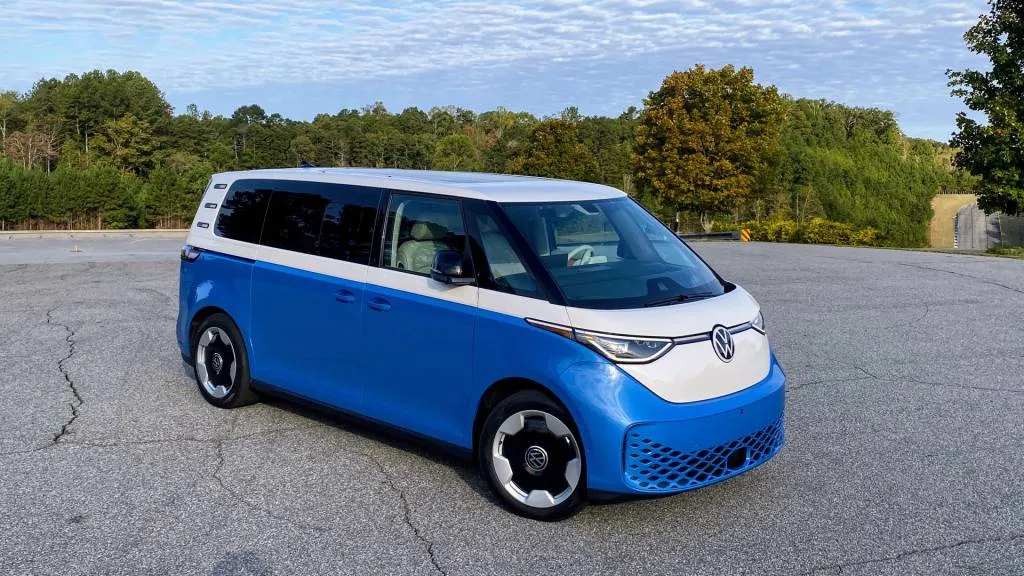
2025 Volkswagen ID.Buzz
In U.S. form, the ID.Buzz is offered in a series of seven different two-tone schemes pairing various colors with white, or a Cherry Red-and-gray two-tone, or monochromatic white, gray, or black. And for now and the foreseeable future the ID.Buzz comes to the U.S. only in this three-row form, with an overall length of 195.4 inches, riding on a very long wheelbase of 127.5 inches. Its overall height of 76.2 inches makes it about 10 inches taller overall than VW’s ID.4 crossover, while still offering 6.1 inches of ground clearance that should be just fine for getting down two-tracks on the way to campsites or trailheads.
VW ID.Buzz impressions: Quick and quiet, precise but heavy
VW decided at some point that it couldn’t launch the ID.Buzz in the U.S. with its original standard-wheelbase form factor—thus adding two long years to its arrival date. So for us, the upgrades include about a 10-inch stretch, a new infotainment interface, software improvements, and a more powerful rear motor—as well as a bigger 91-kwh battery (vs. the 82-kwh pack in those Euro versions).
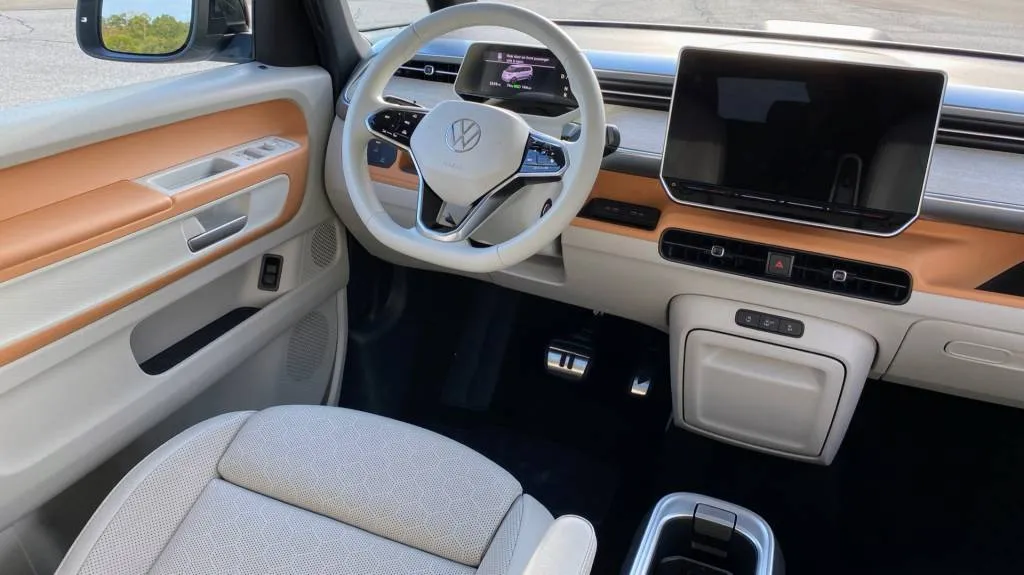
2025 Volkswagen ID.Buzz
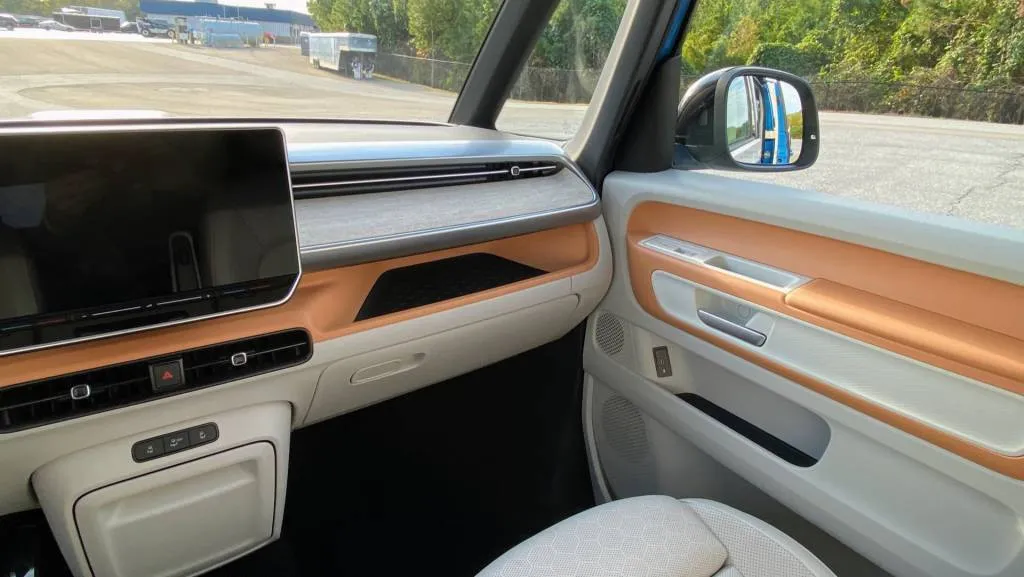
2025 Volkswagen ID.Buzz

2025 Volkswagen ID.Buzz
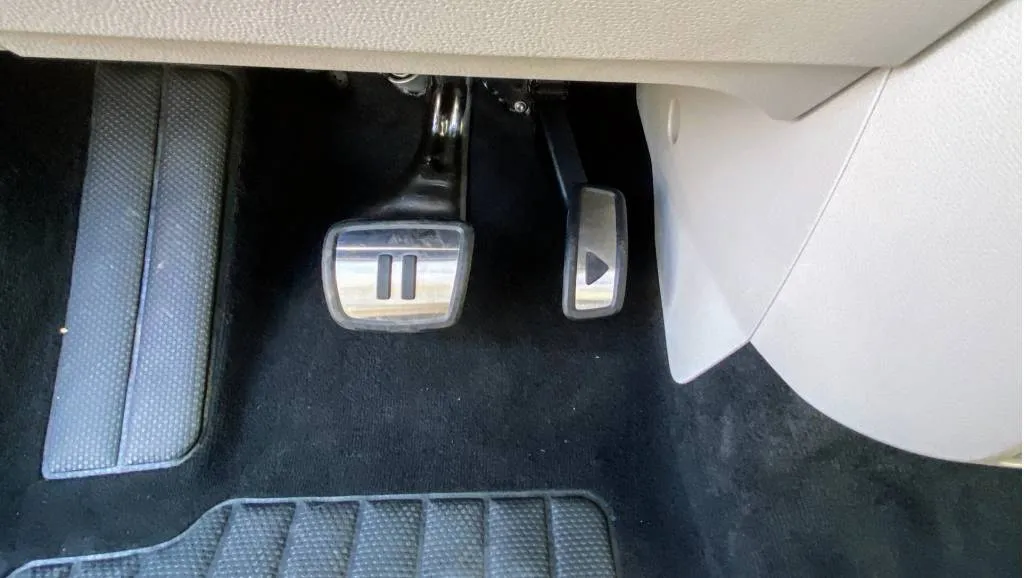
2025 Volkswagen ID.Buzz
How does the ID.Buzz drive? In a word: heavy. Yes, you do feel all three tons. It’s also softly sprung, and clearly tuned more for a compliant ride than for handling. But thanks to the low center of gravity and precise steering, it’s never a handful. And if you’ve done plenty of drive time in full-size, truck-based vans and minivans alike, it’s a driving experience that’s clearly in the minivan zone. The ID.Buzz is quite wide, at 78.1 inches without the mirrors, and on the narrow Georgia backroads, with no shoulder, I appreciated its predictable behavior and easy lane placement.
In parking lots, the same thing goes, within the reality that it’s every bit as long as some three-row SUVs. In single-motor rear-wheel-drive form as the one I drove, the turning circle is an amazing 37.4 feet, although AWD versions will raise that to 42.7 feet. Having real, old-fashioned, through-the-windows outward vision—beyond camera systems and beeping sensors—really helps.
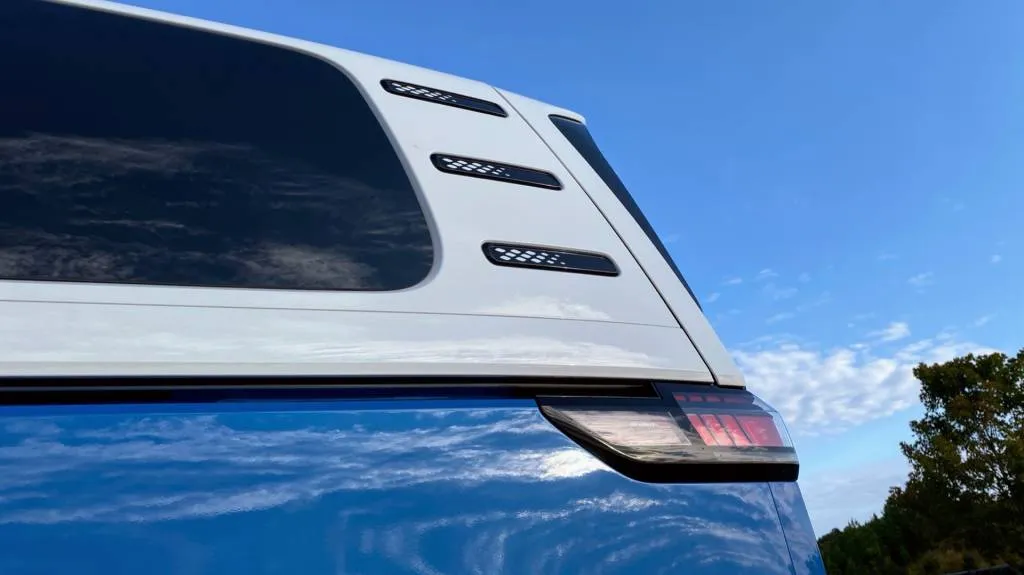
2025 Volkswagen ID.Buzz
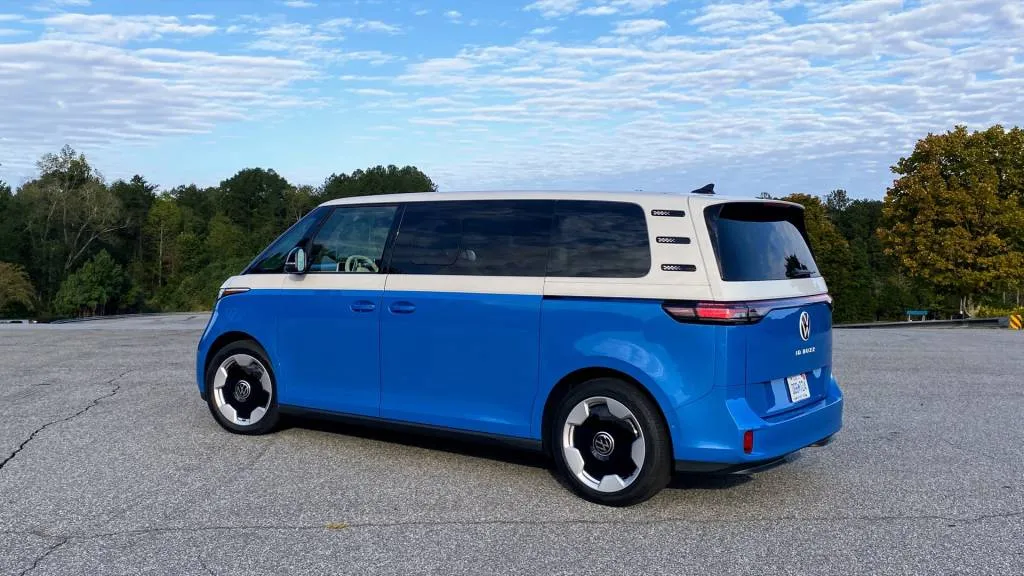
2025 Volkswagen ID.Buzz
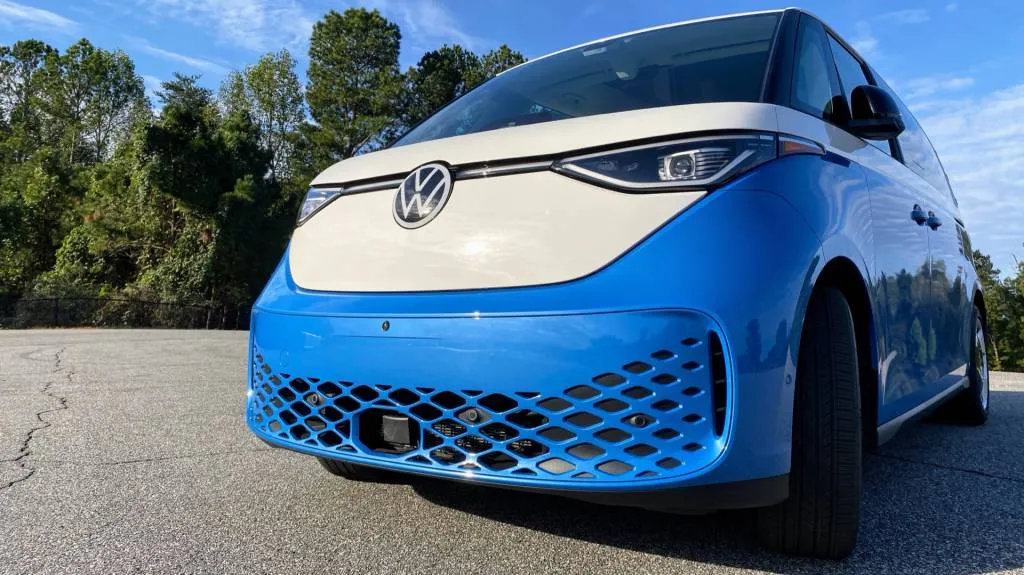
2025 Volkswagen ID.Buzz
While VW hasn’t outlined any serious changes to suspension tuning in refreshing this model for the U.S., this ID.Buzz didn’t provide as much nosedive under hard braking as we experienced with a drive in the shorter version a couple years ago—perhaps a benefit of the longer body.
The ID.Buzz gets VW’s own uprated electric drive unit (called AP550 and now used in the 2024 VW ID.4) at the rear wheels, making 282 hp and 413 lb-ft of torque. Those upcoming AWD versions will get the same drive unit at the rear wheels plus an inductive motor at the front wheels, making 99 lb-ft of torque and upping the total output to 335 hp.
Although one editor who drove the ID.Buzz called it sluggish, I found it to be plenty perky with the single-motor setup. 0-60 mph times will be 6.0 seconds in dual-motor form, according to VW, while rear-wheel-drive versions like the one we drove take it to about 7.5 seconds. Towing capacity for the ID.Buzz is 2,600 pounds for a braked trailer, or 1,650 pounds unbraked.
Yes, it’s heavy. Even in its leaner rear-wheel-drive form that we test-drove, it officially weighed in at just 32 pounds short of three tons. Add the dual-motor AWD setup and you’re at 6,197 pounds.
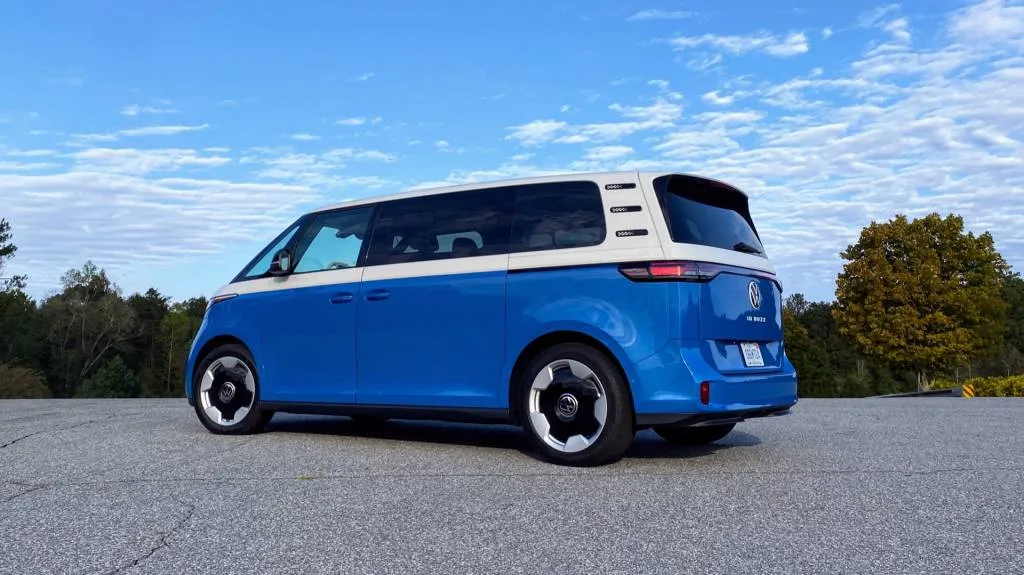
2025 Volkswagen ID.Buzz
ID.Buzz range and efficiency
As in other VW EV products, a twist of the shifter allows access to either the ‘D’ mode, which lets you glide with minimal regeneration, or the ‘B’ mode, which dials up regen somewhat but remains quite mild. Switching the drive mode to Sport makes each of these levels slightly higher, with Sport and ‘B’ a good companion for hilly, twisty roads, but there’s still nothing quite like a one-pedal mode here. But brake pedal feel and blending are exactly what they need to be—predictable and progressive.
VW says that the ID.Buzz gets 2.5 miles per kwh (83 MPGe) combined, with the EPA highway cycle yielding 2.2 mi/kwh (75 MPGe). In a 110-mile loop up into low mountains, including some U.S. freeway speeds, fast-moving backroads, and mid-speed suburban streets, with outside temps around 50 degrees Fahrenheit, I averaged 2.6 mi/kwh according to the trip computer. Then, on an easygoing highway cruise, most of it pretty level at 65-70 mph, I averaged 2.4 mi/kwh.

2025 Volkswagen ID.Buzz
We charged the ID.Buzz, too, with Level 2 charging that flexed its 11-kw onboard charger, and with some DC fast-charging. In an experience that admittedly wouldn’t mimic what most owners would have on a road trip, we plugged a 160-kw CCS connector in at 44% and still saw a peak of 117 kw around 49%, with the state of charge reaching 90% in about a half-hour. VW says that DC fast charging at up to 200 kw enables a 10-80% charge in as little as 26 minutes.
In all, while a 100% charge amounts to as little as 191 miles according to the gauge cluster, we saw better, with our results roughly corresponding to the Buzz’s EPA range rating of 234 miles (or 231 mi. in AWD form).
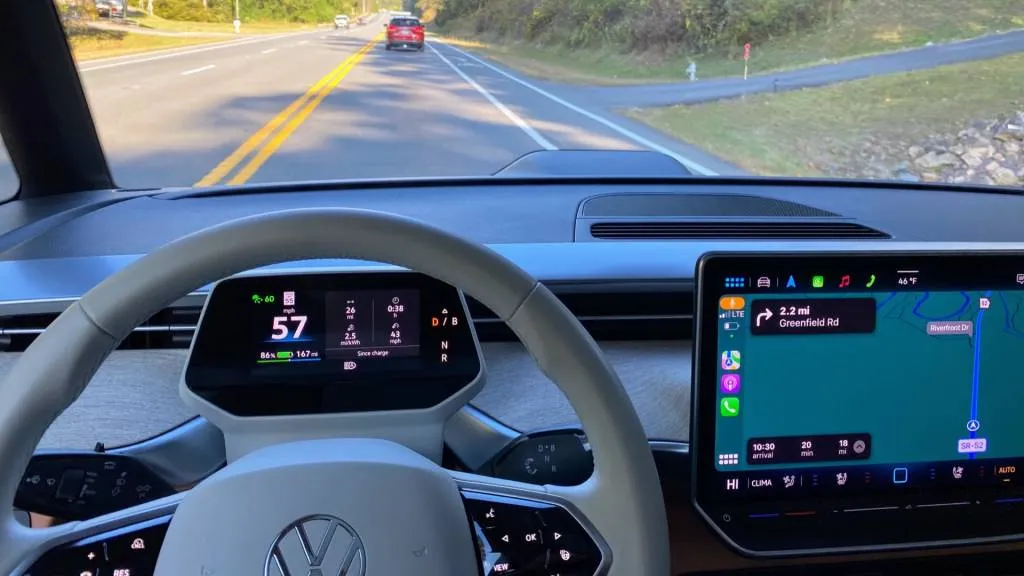
2025 Volkswagen ID.Buzz
Trip planning is built into the native navigation system, and it will start preconditioning of the battery pack to access the maximum charge rate automatically with a charging stop along the route, or with a press of the virtual button on the screen. And if you want to bypass it all and go with the mapping app of your choice, you can still pair your phone for Apple CarPlay or Android Auto. I mixed it up between CarPlay and the built-in interface, and both sides worked great.
Buzz bins of flexibility, space, tech here
The three-row VW ID.Buzz also has a lot of flexibility in door bins and various storage places. The tall console between the front seats can lift completely out of the vehicle, as a sort of mini-cooler if you wish, and the pull-out drawer with cupholders and more storage stows away neatly to keep it feeling airy and spacious. Two levels of door bins and a dash tray give you plenty of space for the smaller pieces of a road trip.
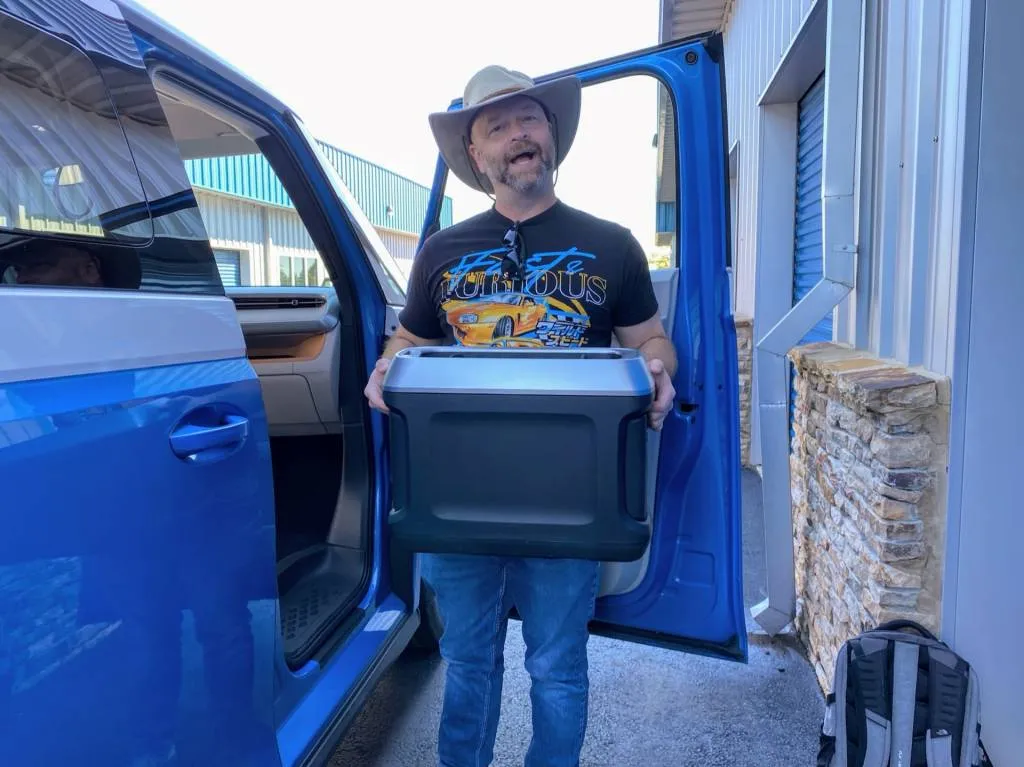
2025 Volkswagen ID.Buzz
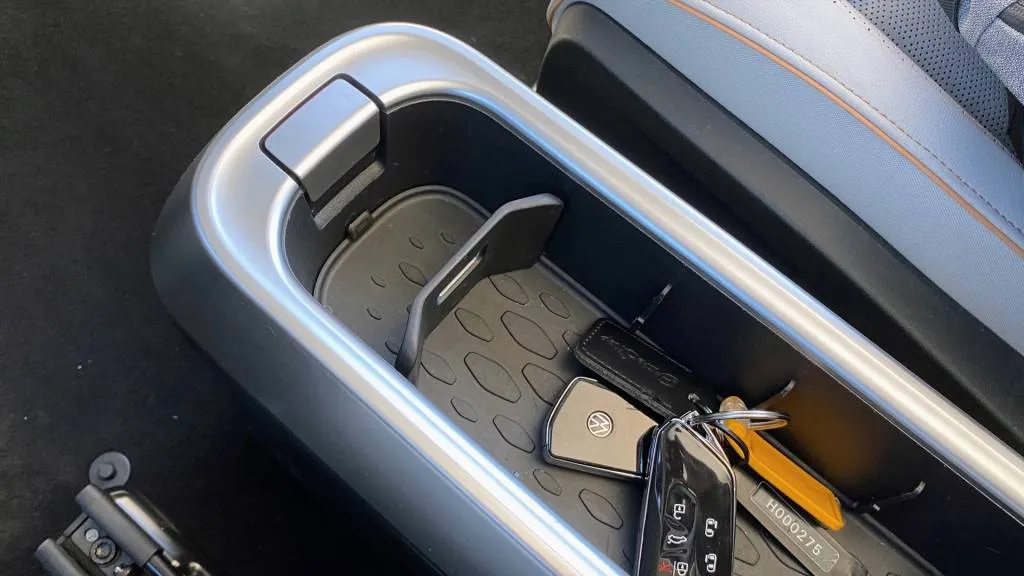
2025 Volkswagen ID.Buzz
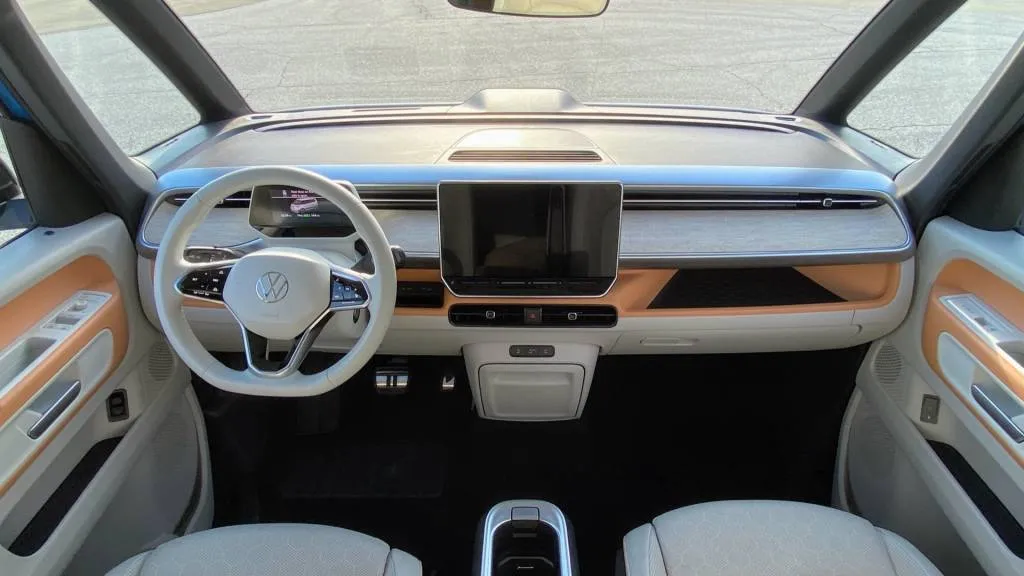
2025 Volkswagen ID.Buzz
I found the grippy phone shelf just to the right of the steering wheel to be an ideal place for my phone to charge wirelessly without sliding around. And in the effort to kit this model out a bit better for three rows, there are now eight USB-C ports on board. Front seats are heated, cooled, and power-adjusted, providing an inbound armrest plus an upright driving position and the kind of back support I like for longer trips.
The sliding door powers open and closed in a way you’ll find absolutely familiar if you ever had premium minivans in the household—and, it just barely stays out of the way of charging-in-progress, we found. The biggest choice ID.Buzz buyers might face, other than the color, of course, will be the seating layout—trading out the middle bench in our model for second-row captain’s chairs and a six-passenger capacity (the only way for AWD versions).

2025 Volkswagen ID.Buzz
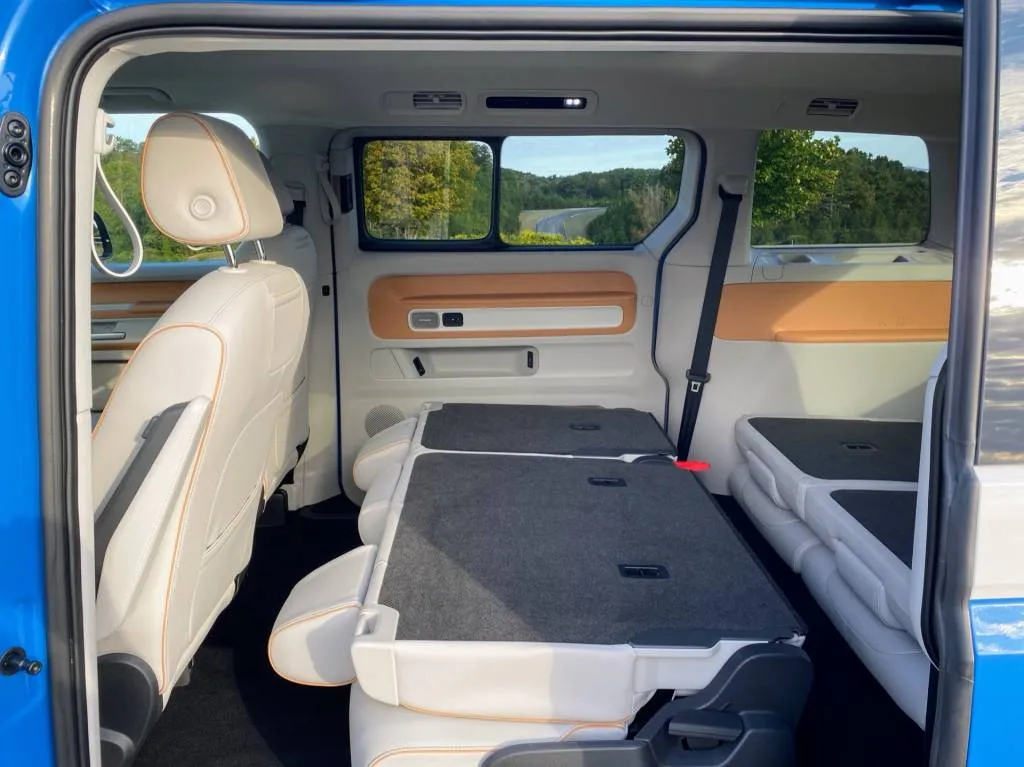
2025 Volkswagen ID.Buzz
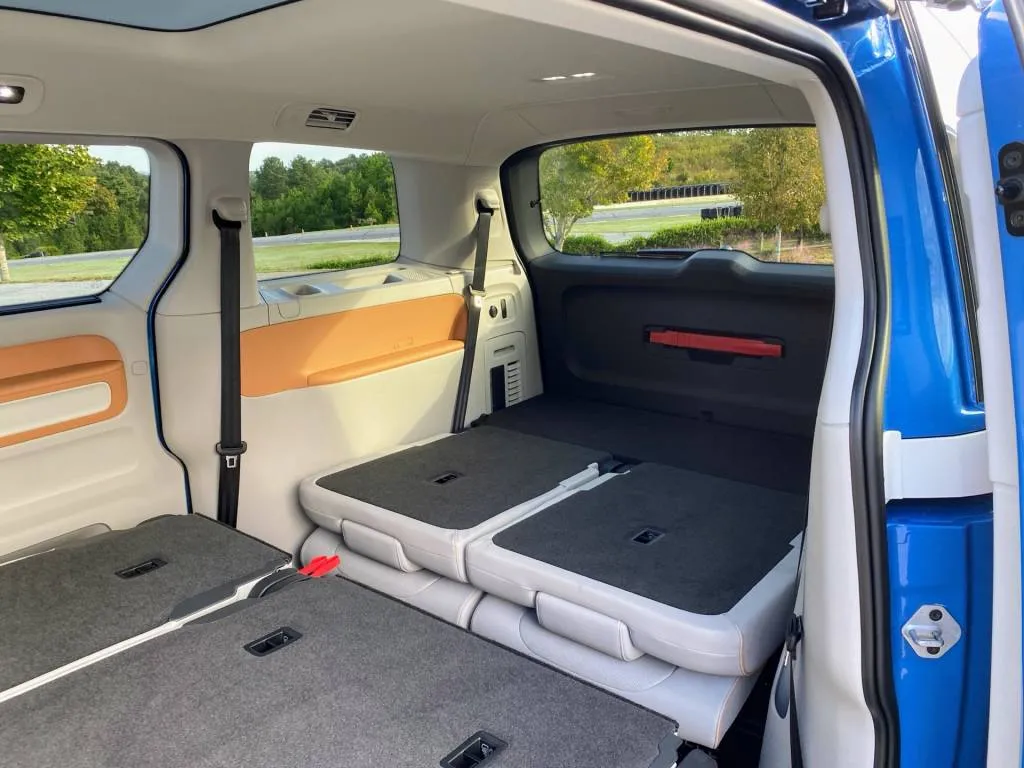
2025 Volkswagen ID.Buzz
Although the far-back cargo area of the Buzz appears a little strange at first look, with baskets underneath a sturdy hinged door, the folded third row, and the folded second row all line up at the same level—save for a gap of a few inches between the second and third row. If you want to sleep in the thing, that’s nothing a good piece of plywood won’t solve. Remove the seats—they’re heavy—and the rearmost section bumps up to again require some sort of level-up, if you plan to sleep, live, or otherwise inhabit this vehicle for something other than just driving.
VW is guessing that the majority of Buzz customers will come from “large SUVs.” It boasts more interior space than the Atlas, in the footprint of a Cross Sport. VW also claims best-in-industry third-row legroom versus. other American-market vehicles.
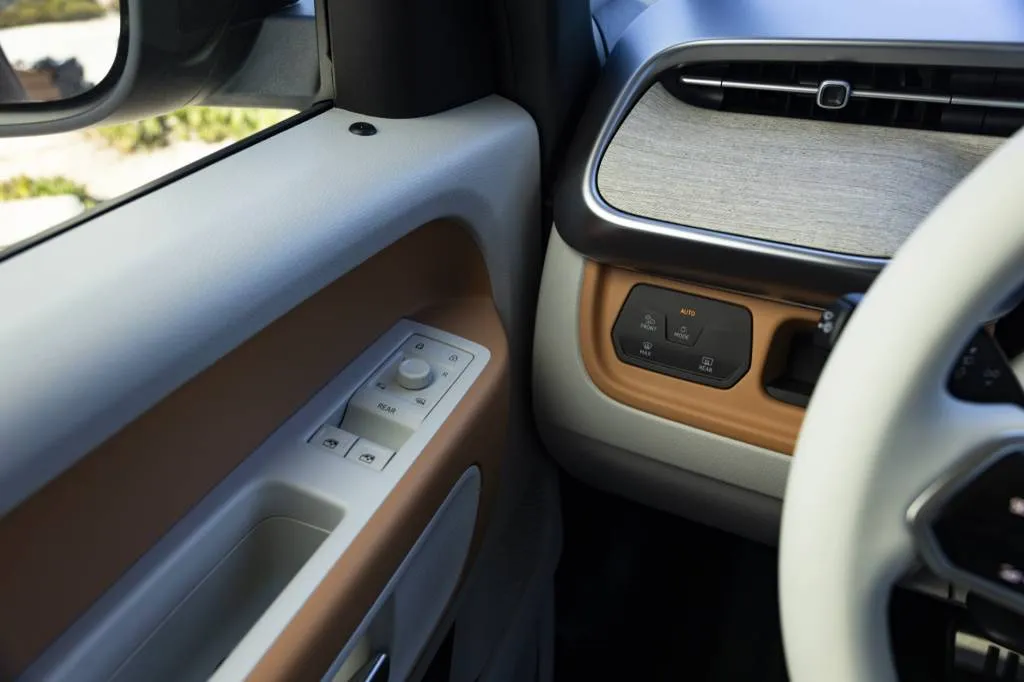
2025 Volkswagen ID.Buzz
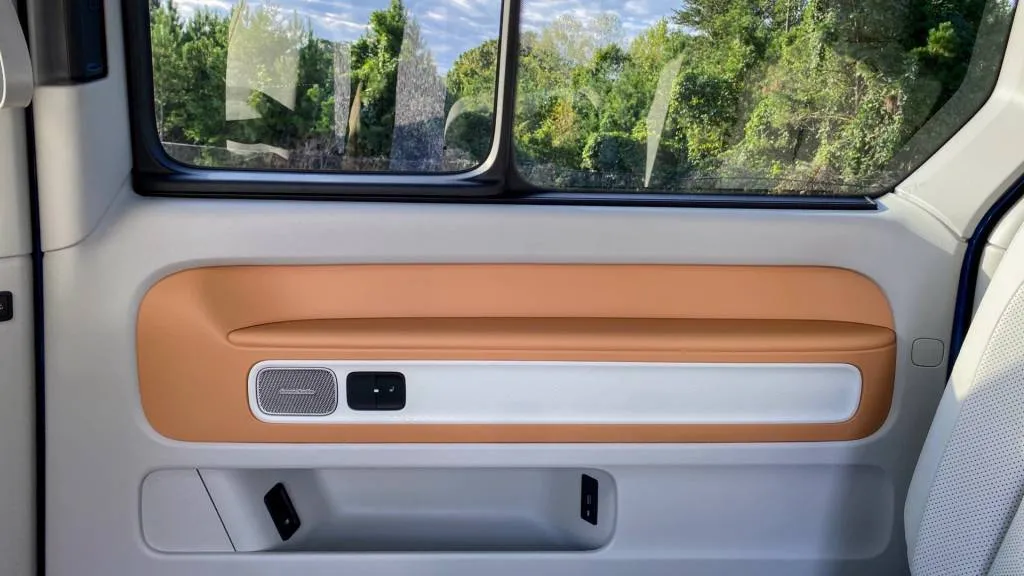
2025 Volkswagen ID.Buzz
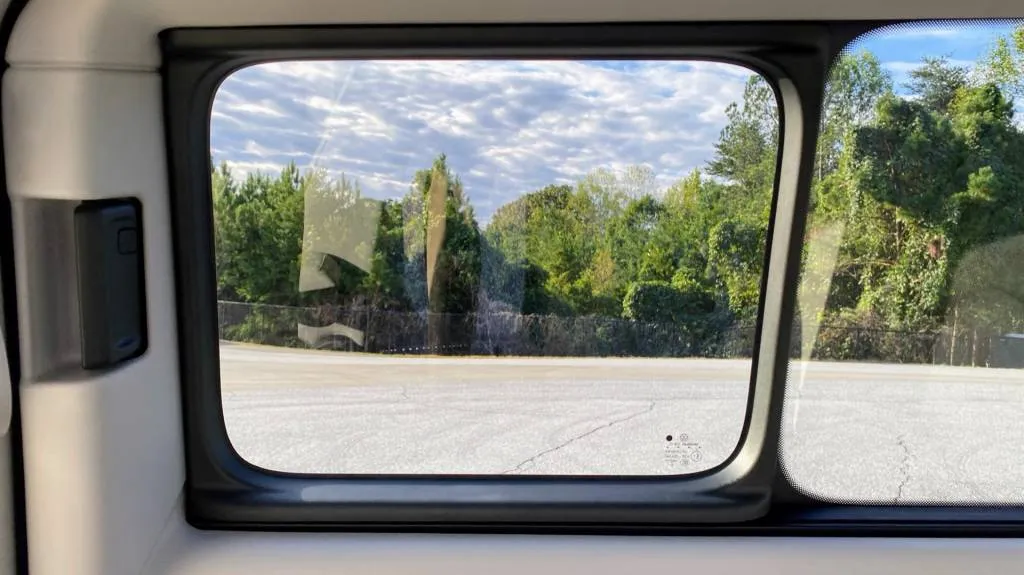
2025 Volkswagen ID.Buzz
One thing VW has carried over from the ID.4 and the Euro-spec ID.Buzz is its one-fits-all power window controls, combining the front and rear window operation—for the otherwise very cool rear window-within-a-window in back—into one switch. Here it’s even more potentially overwhelming and confusing. VW, why did you subject us to this?
My only other dynamic gripe follows what’s otherwise a compliment—the absence of engine noise and great isolation of road-surface noise. Just above 65 mph we noticed some whooshing wind noise in the zone between the front pillar and the side mirror, which wound itself almost to a whistle by 80 mph. I should note the version I drove was still officially a pre-production prototype, so window sealing may not have been up to production snuff.
The ID.Buzz, in U.S. form, achieves a coefficient of drag of 0.29, according to VW, and the top speed is up to 99 mph (from 90 in earlier Euro versions).
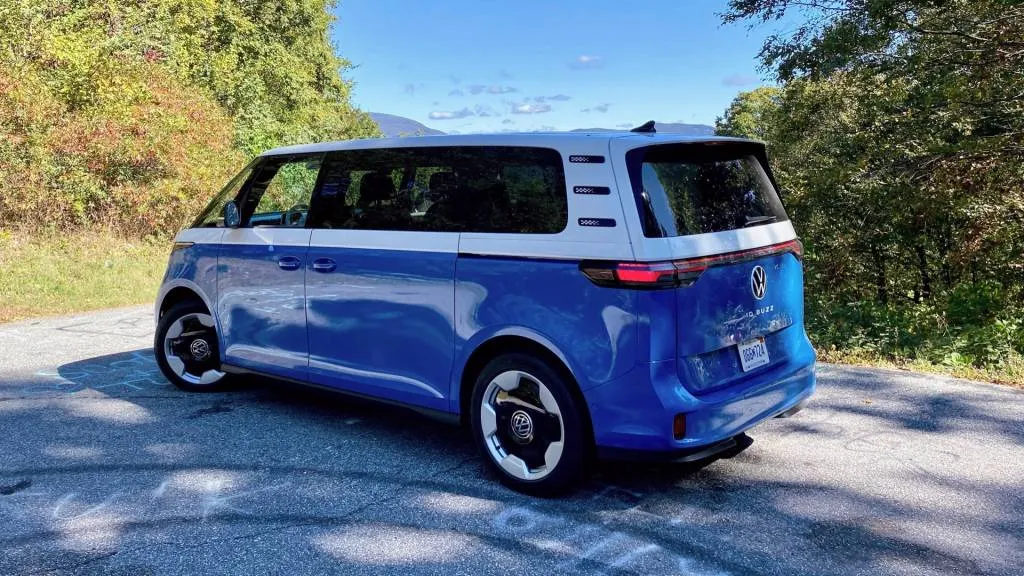
2025 Volkswagen ID.Buzz
ID.Buzz prices: The start of a bad trip?
The pricing and positioning of the Buzz is the only bad trip here. It’s just confounding
Because of the way it was implemented—pragmatic interior, retro cues on the outside, but not overdone—the biggest puzzle in all of this is how and why VW sees the ID.Buzz as a niche model.
The Buzz starts at $61,545, including the $1,550 destination fee, with the Pro S, which includes all the active-safety tech, three-zone climate control, a power tailgate and power sliding doors, heated second-row outboard seats, and the quicker, revamped 12.9-inch infotainment system. Pro S Plus versions add the retractable tow hitch, a head-up display, Harmon Kardon premium sound, and in AWD versions only, the captain’s chairs layout and a heated windshield. The top 1st Edition costs $67,045 in single-motor form or $71,545 with AWD and adds the panoramic roof and two-tone look (optional separately), roof cross bars, and floor mats.
Our test ID.Buzz, a Pro S Plus in Cabana Blue and Candy White on the outside ($995 extra), with a Dune interior and the optional $1,495 electrochromic panoramic roof—huge, at 67.4 inches long and 40.8 inches wide—adds up to $67,535. That glass became a pearlescent gray as the sun shone on it. VW says that and the retractable trailer hitch are firsts for the brand in America.
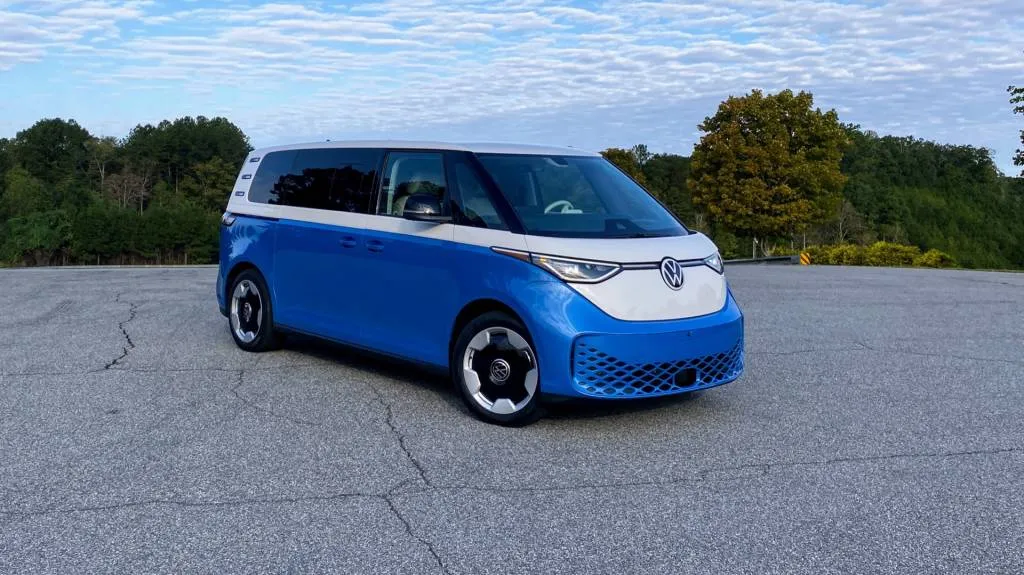
2025 Volkswagen ID.Buzz
VW has no plans to build the ID.Buzz in the U.S. anytime soon, so there’s no hope for a $7,500 tax credit (although discount leases are likely via the EV leasing loophole). It didn’t even develop the Buzz through normal passenger-vehicle channels, instead turning to its commercial-vehicles unit to realize this product—which seems like it should have been a Golf-like project at the core of the company’s survival.
In 1965, when Microbus sales started to accelerate and get wrapped into the counterculture, the average cost of a new vehicle was about $2,650, and the admittedly no-frills Microbus lineup topped out around $2,550. According to the federal government’s official consumer price index calculator, VW’s $2,550 then would equate to about $25,400.
Today, the average price of a new vehicle today stands at around $48,000, and VW’s choice to sell this vehicle at 25% above that clearly underscores that they see it as a premium vehicle, a niche model that may come and go.
But in this format, the ID.Buzz could command a market of one for years. Remember when minivans made a design statement? The Chevy Astro Van, the Ford Aerostar, the Pontiac Trans Sport and the other “dustbuster” vans from GM, the Toyota Previa: This is just as head-turning, with staying power.
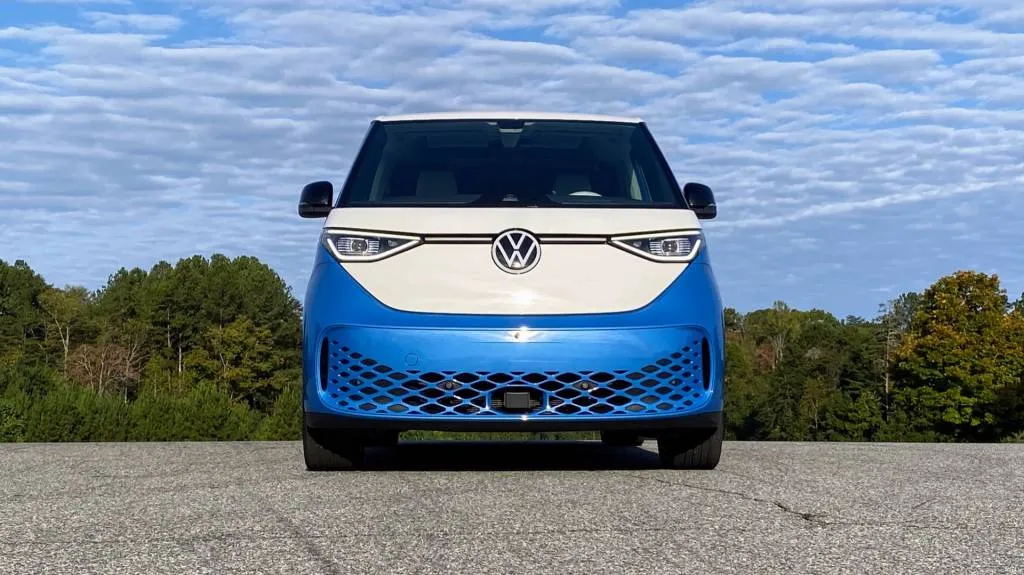
2025 Volkswagen ID.Buzz
The ID.Buzz really needed to be a just-the-basics $40,000 vehicle, sold much like Scion was selling its vehicles some years back, plus a modular interior and an endless lineup of official VW accessories. It would have sold like crazy—to businesses, to younger active types, even to families seeking to have a vehicle they can change the configuration of over the years—and it would have answered dealerships’ trepidation over the sustainability of the retail model in the EV era.
As it is, the ID.Buzz is a great product that limits the future of the brand in the U.S. within a ridiculously narrow bandwidth.
Will priced-out ID.Buzz buyers buy a Kia EV9 or base Rivian R1S instead? Will VW dealers behave with their markups? Let the craziness begin.










